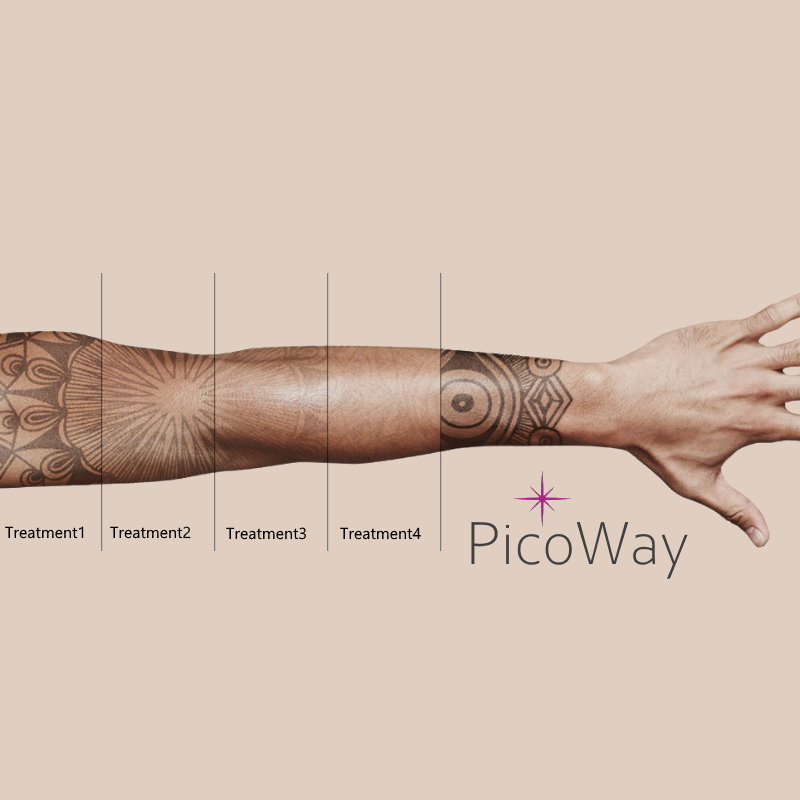Tattoos are one of the most creative and unique ways of self-expression, and while it may be enjoyable to get one, it is not uncommon to wish for it to be erased.
For instance, tattoos can bring up old memories you no longer want to remember. When it comes to cosmetic tattoos, they simply may not look good as they age or the technician didn’t do them correctly in the first place.
Whatever the reason for choosing eyebrow tattoo removal, multiple procedures exist that are safe and effective.
However, there are so many choices out there that making a choice can be a little overwhelming. Should you prioritise based on costs, or look at potential side effects such as scarring and pigmentation before making a decision?
Because laser tattoo removal has been on the market for some time, most people are aware of some of the benefits and drawbacks of this procedure. Saline tattoo removal, on the other hand, is a newer treatment that has revolutionised the industry.
If you’re interested in learning more about this alternative treatment, keep reading!
What Is Saline Tattoo Removal?
The process of saline tattoo removal uses saline or salt water for fading or completely removing tattoos from the body. The technician will use a tool that looks like a microblading pen or tattoo gun to inject the solution into the tattoo for a short amount of time. The saltwater helps break down the pigment or ink in the skin and triggers the process of osmosis, where the saline pulls the pigment up to the skin’s outer layer. The targeted area is expected to heal, scab, and fall off to make the tattoo lighter.
What Happens During the Procedure?
When it comes to removing eyebrow tattooing Melbourne, the first step starts with scheduling an appointment with a qualified technician. During the consultation, all needs must be discussed to work out a plan for the procedure.
On the day of the treatment, a numbing cream will be applied to the targeted area to minimise pain. The skin will then be sterilised carefully and with the help of a tattoo gun, the solution will be inserted into the tattooed skin. The saltwater will work by breaking up the pigment and forcing it out to the skin’s outer surface through osmosis.
The extracted pigment will heal into a scab and fall off when ready, making the tattoo noticeably lighter when it does. The healing process will typically last for about eight to ten weeks, depending on how quickly the skin recovers. Some clients require more than one session after their skin has completely healed to fade the tattoo.
Who Would Make a Good Candidate for the Procedure?
You’ll be an ideal candidate if you –
● Are planning to remove permanent makeup or a small tattoo
● Do not suffer from a severe health or skin condition that prolongs healing
You might not be the right candidate if you –
● Have a large tattoo
● Are diabetic
● Are prone to developing keloid scars
What is the Healing and Aftercare Process?
Below is an outline of what to expect during a typical tattoo removal healing process –
On the day of the treatment – The treated area will feel tender and appear swollen and red.
First couple of days – The treated area will start to scab over.
One week – The treated area will continue to scab.
Two weeks – The scabs will begin to fall off, but the skin may look discoloured or pink and appear fragile as it is still healing.
One month – The skin will look more normal by this time.
Two months – The area will have healed completely now and it would be time to book the next appointment if required.
A technician will provide a detailed list of aftercare instructions to speed up the recovery process. Here are some of the standard guidelines for saline tattoo removal –
● Do not cover the area unless working at a place with a higher risk of infection, such as a hospital.
● Do not touch the area while it’s healing. It’s important not to pick or wash it, or apply soaps and lotions not recommended by the technician.
● Stay away from direct sunlight.
● Avoid activities that can cause sweating, including those where the entire body must be submerged in water, until all the scabs have fallen off.
● Do not pick the scabs, it is important to let them fall off naturally.
● Apply vitamin E oil to aid healing, as per the technician’s advice when the scabs fall off.
Speak to a Qualified Technician for Help!
When unsure which tattoo removal procedure is right for you, remember to ask for help from a professional. Book a consultation with a qualified technician and discuss your goals and concerns. Based on the discussion, you can decide which treatment procedure is the best for you.



